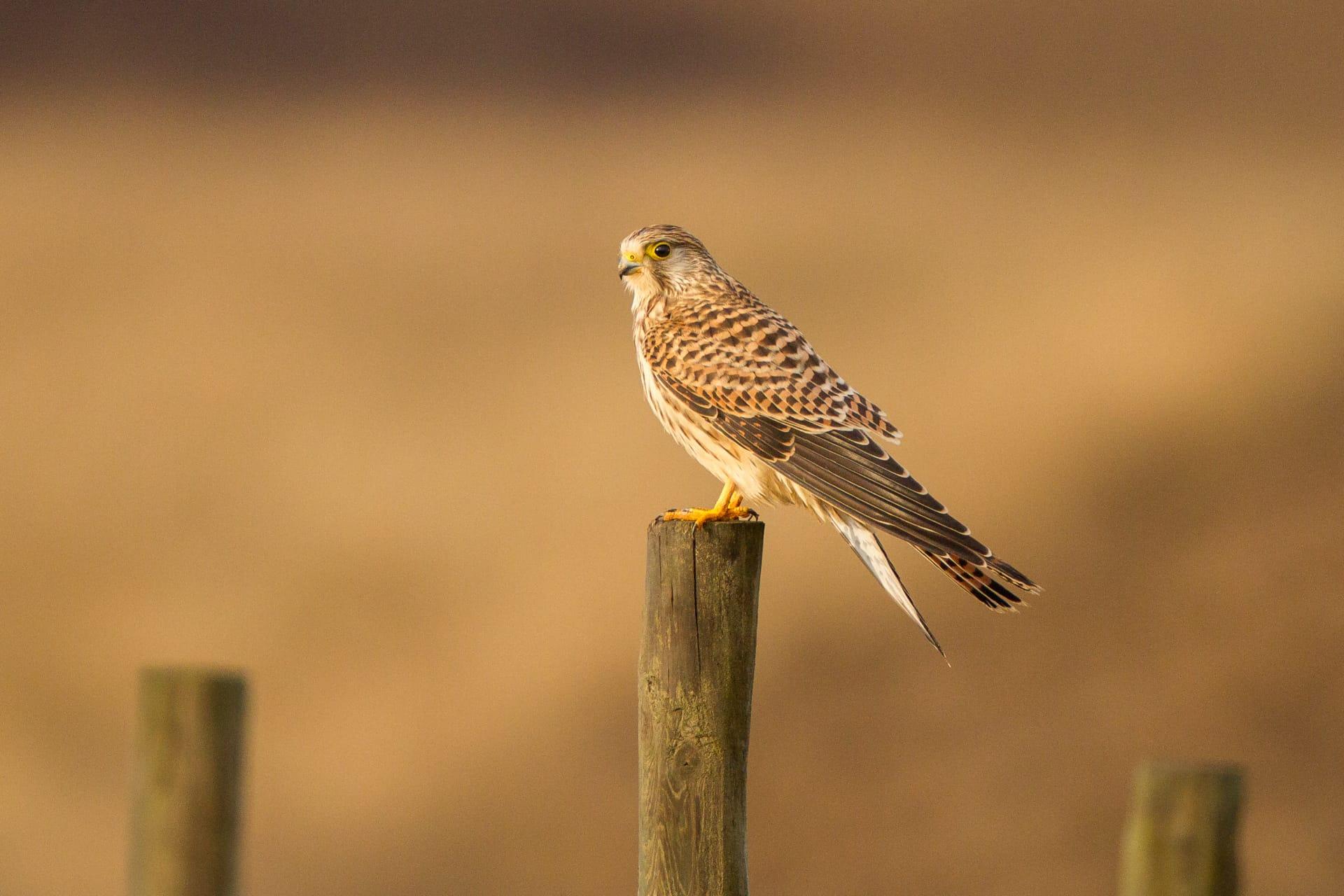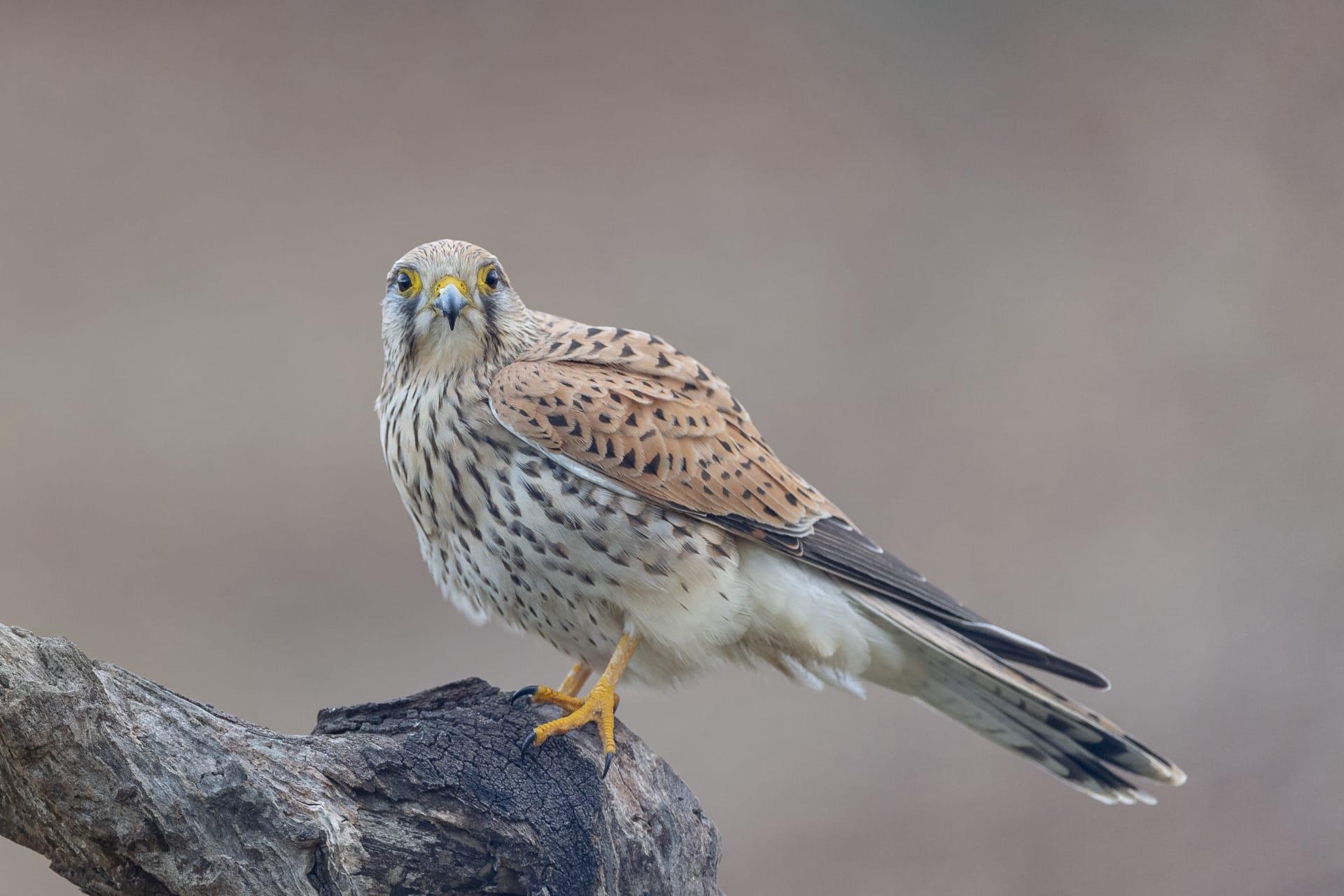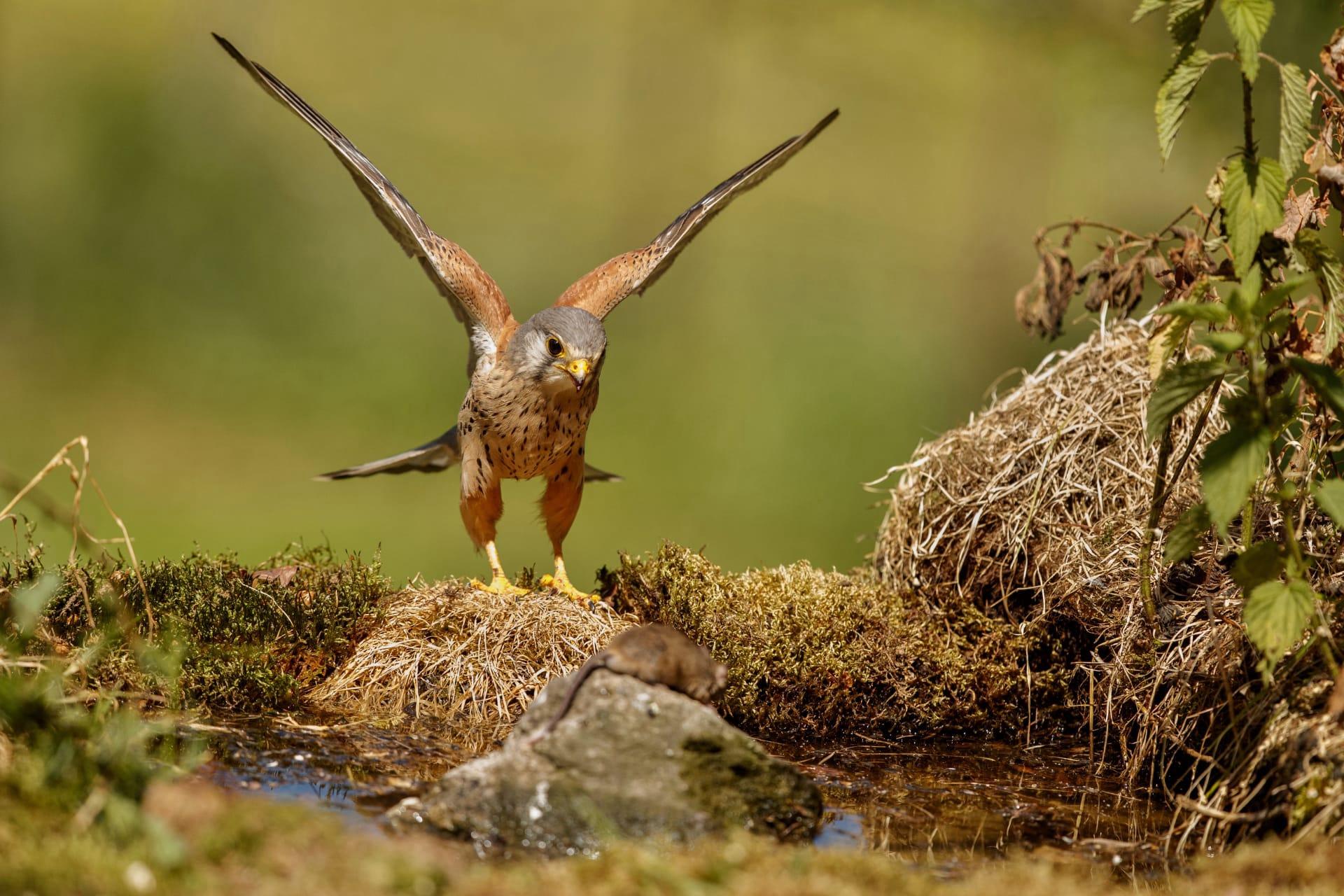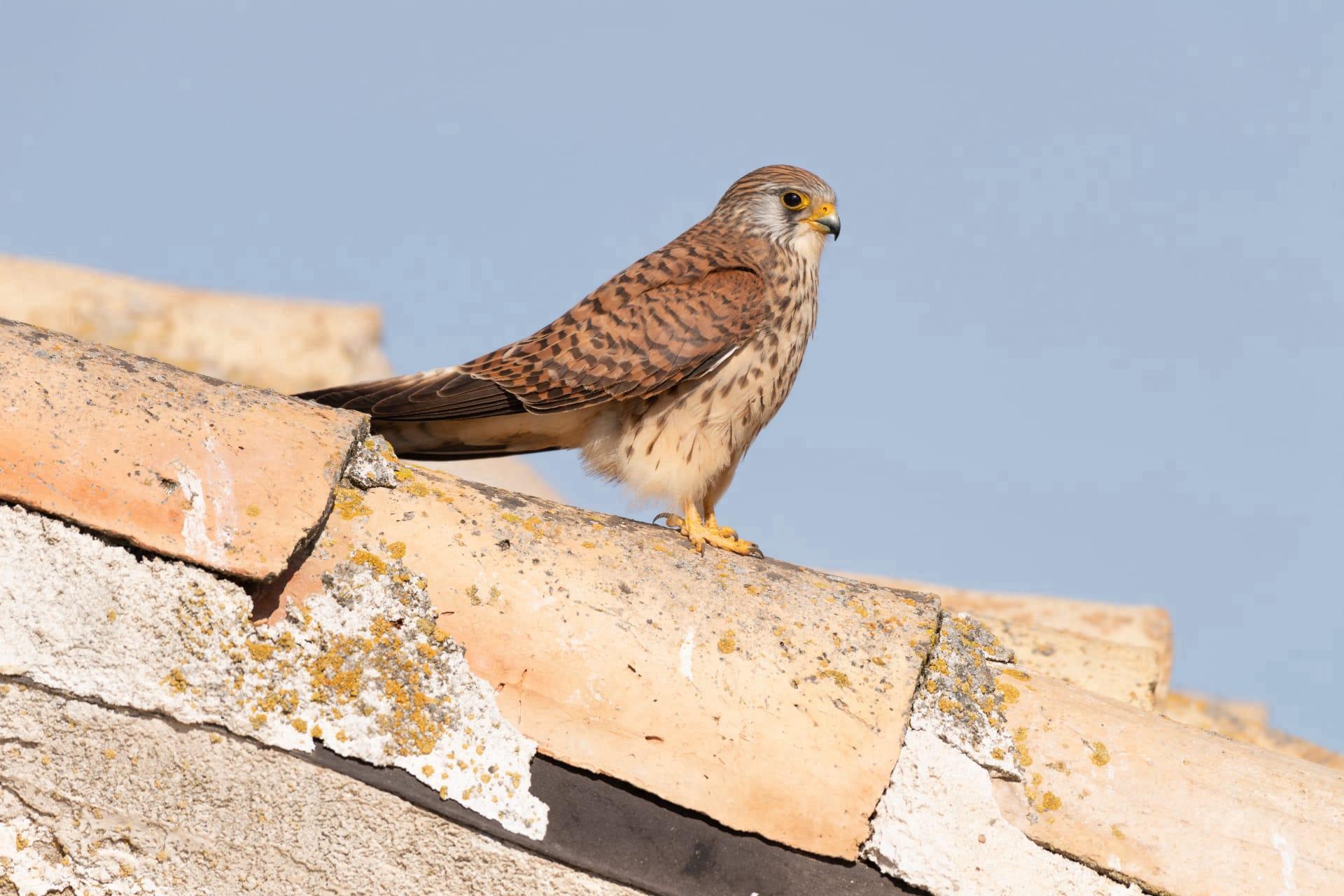Kestrel
- Home /
- Mini Encyclopedia /
- Animal /
- Kestrel
1
Kestrels, known scientifically as Falco tinnunculus, belong to the family Falconidae, which includes the fastest birds on the planet. They are small to medium-sized birds of prey, characterized by a compact build with a rounded head and powerful beak. Males and females differ slightly in size, with males usually being smaller. Their plumage is also distinctive – males typically exhibit blue-grey heads and tails with a rufous back and underparts, while females have a more uniform brown coloration with black barring.
Kestrels are widely distributed across Europe, Asia, and Africa, adapting to a variety of habitats. They are particularly common in open areas like grasslands, farmlands, and heathlands, but can also be found in urban settings. Their range extends from the United Kingdom and Spain in the west, across Europe and Asia, to China and Mongolia. In Africa, they are found from Egypt and Morocco down to South Africa. These birds are partially migratory, with northern populations moving south during winter months to avoid harsh conditions.

2
Question: Do Kestrels use speed as their primary hunting technique, similar to other falcons?
Answer: Unlike their larger, speedier relatives, Kestrels do not rely on high-speed dives to catch prey. Instead, they use a unique hunting method called "hovering." This involves flying at a steady height above the ground, beating their wings rapidly to stay stationary in the air. They have keen eyesight, spotting prey like small mammals and insects from above. Once they've locked onto their target, Kestrels drop down swiftly to catch it. This efficient technique allows them to hunt in areas with less open space, where high-speed dives would be less effective.

3
Kestrels have adapted several survival strategies to thrive in various environments. One key strategy is their flexible diet. They primarily eat small mammals like voles and mice, but their diet can also include birds, insects, and worms, allowing them to adapt to different food availabilities. Kestrels also have excellent vision, able to see ultraviolet light, which helps them track the urine trails of small mammals – a crucial skill for hunting.
Another survival strategy is their nesting behavior. Kestrels do not build their own nests; instead, they often use old nests of other birds, ledges, or cavities in trees and buildings. This adaptability in nesting helps them thrive in a wide range of habitats, from rural to urban areas. Their ability to live close to humans also benefits them, as it often provides a stable supply of prey.

4
In the ecosystem, Kestrels play a critical role as both predators and prey. As predators, they help control the populations of small mammals and insects, contributing to the balance of the ecosystem. By regulating these populations, Kestrels indirectly support agricultural activities by controlling pests that can damage crops.
As prey, Kestrels are a part of the food chain, supporting larger birds of prey and some mammals. Their presence in different habitats also indicates a healthy ecosystem. Kestrels are sensitive to changes in the environment, such as pesticide use and habitat destruction, making them valuable indicators of ecological health. Conservation efforts for Kestrels can thus have a broader impact on the preservation of biodiversity and ecological balance.

5
Film: "Kestrel's Eye" is a Swedish documentary released in 1999. Directed by Mikael Kristersson, it offers a remarkable insight into the life of a Kestrel family. Without narration or music, the film closely follows these birds as they nest in a church tower, capturing their daily activities and interactions with the surrounding urban environment.
Book: "The Kestrel" by Andrew Village, published in the United Kingdom in 1990, provides a comprehensive study of the species. Village explores the Kestrel's biology, behavior, and ecology, drawing on extensive research and observation to present a detailed portrait of these birds in their natural habitat.
Book: Another notable book is "Kestrels for Company" by Gordon Riddle, released in 2011 in the UK. It combines personal experiences with scientific information, offering insights into the habits and life cycle of Kestrels. Riddle's engaging narrative style brings the world of Kestrels to life, making the book both informative and enjoyable to read.